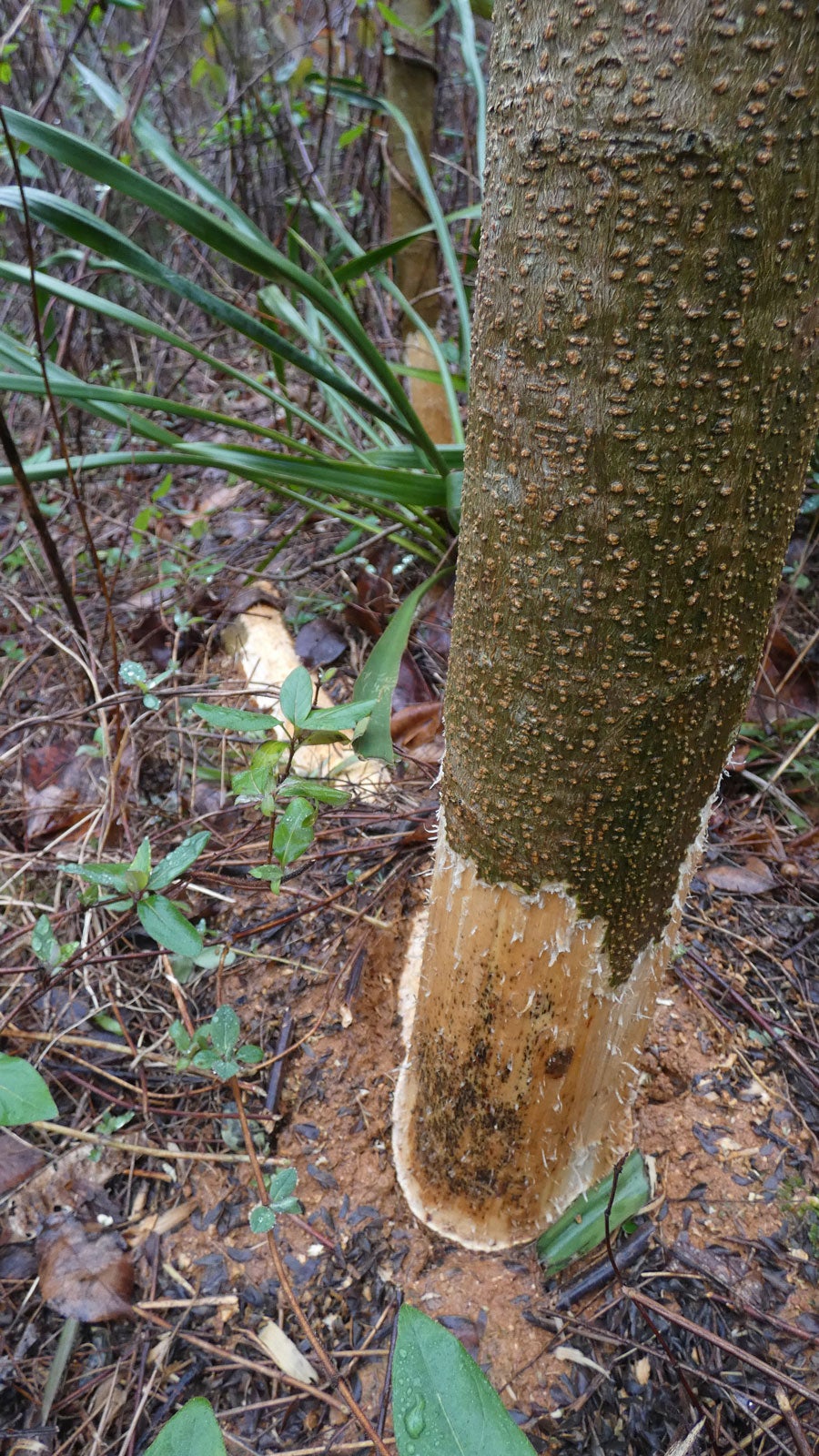Protecting Trees From Rodents: What To Do With Trees Damaged By Rodents


In winter, regular sources of food for rodents die back or disappear. That’s why you’ll see many more trees damaged by rodents in winter than during the growing season. Rodents that eat tree bark include everything from rabbits to voles. With a little effort, you can install rodent protection for trees and take steps to aid trees damaged by rodents. Read on to find out how.
Rodent Tree Damage
Winter is a hard time for rodents, killing off many plants that they usually eat, or else covering them up with a thick layer of snow. That’s why rodents turn to trees for food.
Rodents that eat tree bark, like rabbits, mice, and voles, work hard to get access to the softer, tastier inner tree bark called the cambium layer. The hungry creatures chew through the outer bark of the tree to get to this green cambium.
Rodent tree damage can be moderate, but it can also be very serious. If rodents remove the bark all around the tree, it girdles the tree, effectively killing it. Roots can also be damaged by gnawing.
Rodents That Eat Tree Bark
Rabbits, voles, and mice are some of the more common rodents that eat tree bark. Other animals, like beavers, also damage trees.
You may be surprised when you see rodent tree damage much higher on the trunk than a rabbit or mouse could reach. Don’t forget that snow also acts as a ladder, allowing short rodents access to higher parts of the trunk.
The best thing you can do for trees damaged by rodents is to prune out the dead areas and have patience. A tree that hasn’t been girdled has a fighting chance to recover.
Sign up for the Gardening Know How newsletter today and receive a free copy of our e-book "How to Grow Delicious Tomatoes".
Protecting Trees from Rodents
The most effective rodent protection for trees is to install a barrier. For shrubs, this method of protecting trees from rodents might consist of a wire mesh container affixed over the plant. Trees are usually too big for this type of “cage” protection. Instead, experts recommend that you use hardware cloth (one-eighth to one-fourth-inch mesh) as a way of protecting trees from rodents.
When you are protecting trees from rodents with hardware cloth, you should fold the cloth to form a cylinder around the tree trunk, wrapping the tree to some 30 inches (76 cm.) above the ground and several inches (8 cm.) into the ground. This protects the tree from voles, rabbits, and other rodents.
For young trees, you can buy and use the white, plastic protection tubes made to spiral around the trunks of young trees. Again, you’ll need to extend this rodent protection for trees below the soil surface so that the rodents can’t dig their way into it.

Teo Spengler is a master gardener and a docent at the San Francisco Botanical Garden, where she hosts public tours. She has studied horticulture and written about nature, trees, plants, and gardening for more than two decades, following a career as an attorney and legal writer. Her extended family includes some 30 houseplants and hundreds of outdoor plants, including 250 trees, which are her main passion. Spengler currently splits her life between San Francisco and the French Basque Country, though she was raised in Alaska, giving her experience of gardening in a range of climates.